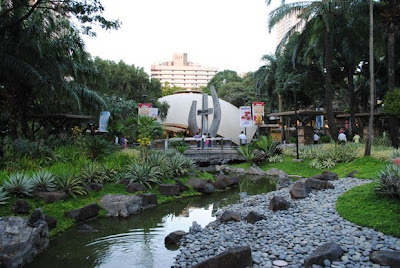Nikon D5000 could easily be seen as a Nikon D60 with a tilting screen added, and most of a Nikon D90 stuffed into it. As such it offers quite a few feature improvements over its little brother. The Nikon D5000 24-fps HD D-Movie mode with sound captures video clips with amazing clarity--offering new and exciting creative opportunities. Featuring a convenient built-in flash, 19 automatic exposure Scene Modes to make the impossible easy and 23 Custom Setting options to fit your preferences, as well as 14 in-camera image retouching functions, the Nikon D5000 is the perfect DSLR, beginning with performance to meet your picture-taking tomorrows. Fast, accurate 11-point autofocus with 3D Tracking, teamed with famous NIKKOR optics, assures incredible image sharpness, while active image sensor cleaning combats annoying dust automatically.
Nikon D5000 Body Feature Highlight
Here are Nikon D5000 highlight feature, just to make sure, this product is the best Entry Level Digital SLR Camera.- 12.3-megapixel DX-format CMOS image sensor. Coupled with Nikon's EXPEED image processing and NIKKOR optics, breathtaking picture quality is assured.
- Built-in image sensor cleaning. Effective 4-frequency, ultrasonic sensor cleaning keeps images spot free.
- Low noise ISO sensitivity from 200 to 3200. Engineered for exceptional low-light shooting.
- Vari-angle color LCD monitor. Position the 2.7-inch monitor freely for fresh shooting perspectives. Screen flips inward for safe keeping.
- D-Movie Mode with sound. Record 720p HD movie clips enhanced by NIKKOR interchangeable lens quality and versatility.
- 3x Zoom AF-S DX NIKKOR 18-55mm f/3.5-5.6G VR lens included. Legendary NIKKOR optical quality features Nikon VR image stabilization for added sharpness.
- In-camera Retouch image editing. Creative in-camera image editing, featuring Soft Filter, Straighten, Color Outline Effect, Perspective Control, Red-eye Correction, Image Overlay, Monochrome and more—all without a PC.
- Auto Active D-Lighting. Restores lost shadow and highlight detail in high contrast exposures—Selectable and Auto modes available.
- 11-point autofocus system with 3D Focus Tracking. Fast and accurate autofocus delivers razor sharpness.
- One-button Live View. Easy Live View access offers 4 autofocus modes, including Face Priority AF. Continuous shooting as fast as 4 frames-per-second. Combined with fast power-up and split-second shutter response, decisive moments are captured easily without annoying shooting lag.
- 19 Auto-exposure Scene Modes. Capture stunning photos in challenging picture-taking situations including Sunsets, Candlelight, Silhouette, Portrait, Landscape, Beach/Snow, and more.
- Picture Control Settings for personal image control.Standard, Neutral, Vivid, Monochrome, Portrait, Landscape and 9 customizable settings.
- GPS geo-tagging. GP-1 GPS unit (optional) automatically identifies and records every image’s latitude, longitude and altitude, with satellite time-of-day.
- Durable, high precision shutter. Testing to over 100,000 cycles assures precision and long shutter life.
- Nikon 3D Color Matrix Metering II. Nikon’s renowned 420-pixel RGB 3D Color Matrix Metering II, teamed with the exclusive Scene Recognition System, evaluates each scene for unmatched exposure accuracy.







